The Yellowtail Clownfish
In this video

The Clownfish inspired the Pixar Animation Studios, of Walt Disney, in the creation of Nemo little fish made famous in many cartoons films. Nemo is in the movies a little fish, curious, cheerful and intelligent, always looking for adventures; adored throughout the world by children and not only. Numerous films have been produced that have had enormous success with the public and brought significant economic revenues to the manufacturer. Yellowtail Clownfish Amphiprion clarkii Pesce pagliaccio intotheblue.it
[supsystic-slider id=114 position=”center”]
The Yellowtail Clownfish (Amphiprion clarkii), known commonly as Clark’s anemonefish, is a marine fish belonging to the family Pomacentridae, the clownfishes and damselfishes. Clownfish or anemonefish are fishes that, in the wild, form symbiotic mutualism with sea anemones and are unaffected by the stinging tentacles of the host anemone. The sea anemone protects the clownfish from predators, as well as providing food through the scraps left from the anemone’s meals and occasional dead anemone tentacles. In return, the clownfish defends the anemone from its predators, and parasites.
Clownfish are small-sized, 10–18 centimetres, and depending on species, they are overall yellow, orange, or a reddish or blackish color, and many show white bars or patches. Within species there may be color variations, most commonly according to distribution, but also based on sex, age and host anemone. Clownfish are found in warmer waters of the Indian and Pacific oceans and the Red Sea in sheltered reefs or in shallow lagoons. Amphiprion clarkii pesce pagliaccio Clark yellowtail clownfish intotheblue.it
In a group of clownfish, there is a strict dominance hierachy. The largest and most aggressive fish is female and is found at the top. Only two clownfish, a male and a female, in a group reproduce through exsternal fertlization. Clownfish are sequential hermaphrodites, meaning that they develop into males first, and when they mature, they become females. They are not aggressive. Clark’s anemonefish is a small-sized fish which grows up to 10 cm as a male and 15 cm as a female. It is stocky, laterally compressed, and oval to rounded.
It is colorful, with vivid black, white, and yellow stripes, though the exact pattern shows considerable geographical variation. Usually it is black dorsally and orange-yellow ventrally, the black areas becoming wider with age. There are two vertical white bands, one behind the eye and one above the anus, and the caudal peduncle is white. The snout is orange or pinkish. The dorsal and caudal fins are orange-yellow, and the caudal fin is generally lighter in tone than the rest of the body, sometimes becoming whitish.
Clark’s anemonefish shows the greatest color variations of any anemonefish, with variations based on location, sex, age and host anemone. Adults in Vanuatu and New Caledonia are orange-yellow with two vertical white bands. Sex related color differences may be present, such as the female having a whitecaudal fin and the male having a yellow caudal fin. Juveniles are orange-yellow with vertical white bands. Fish living with the host anemone Stichodactyla mertensii, Mertens’ carpet sea anemone are frequently black except for the snout bars and tail Clark’s anemonefish is the most widely distributed anemonefish, being found in tropical waters from the Indian Ocean to the Western Pacific.
(exstract from Wikipedia)

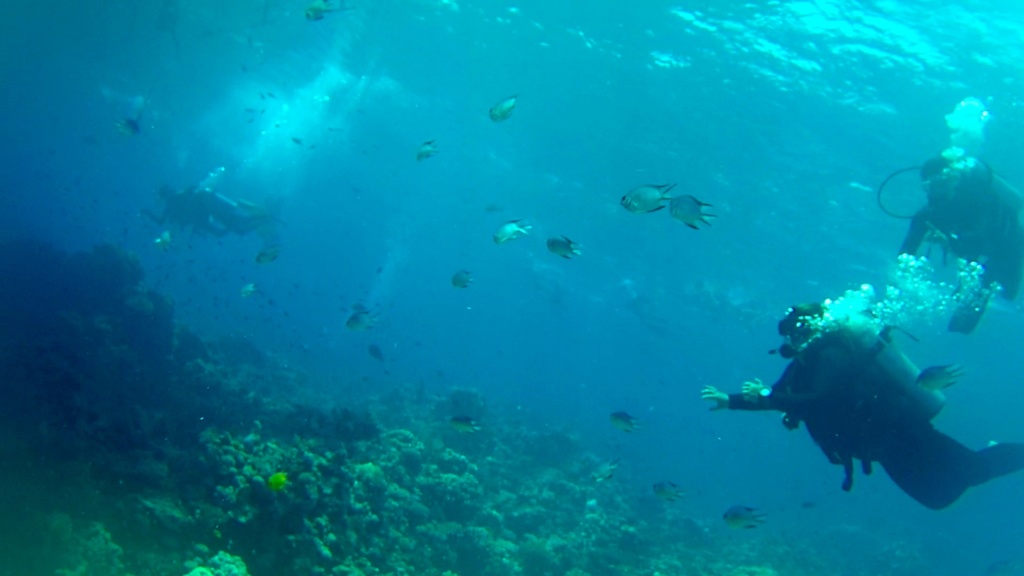
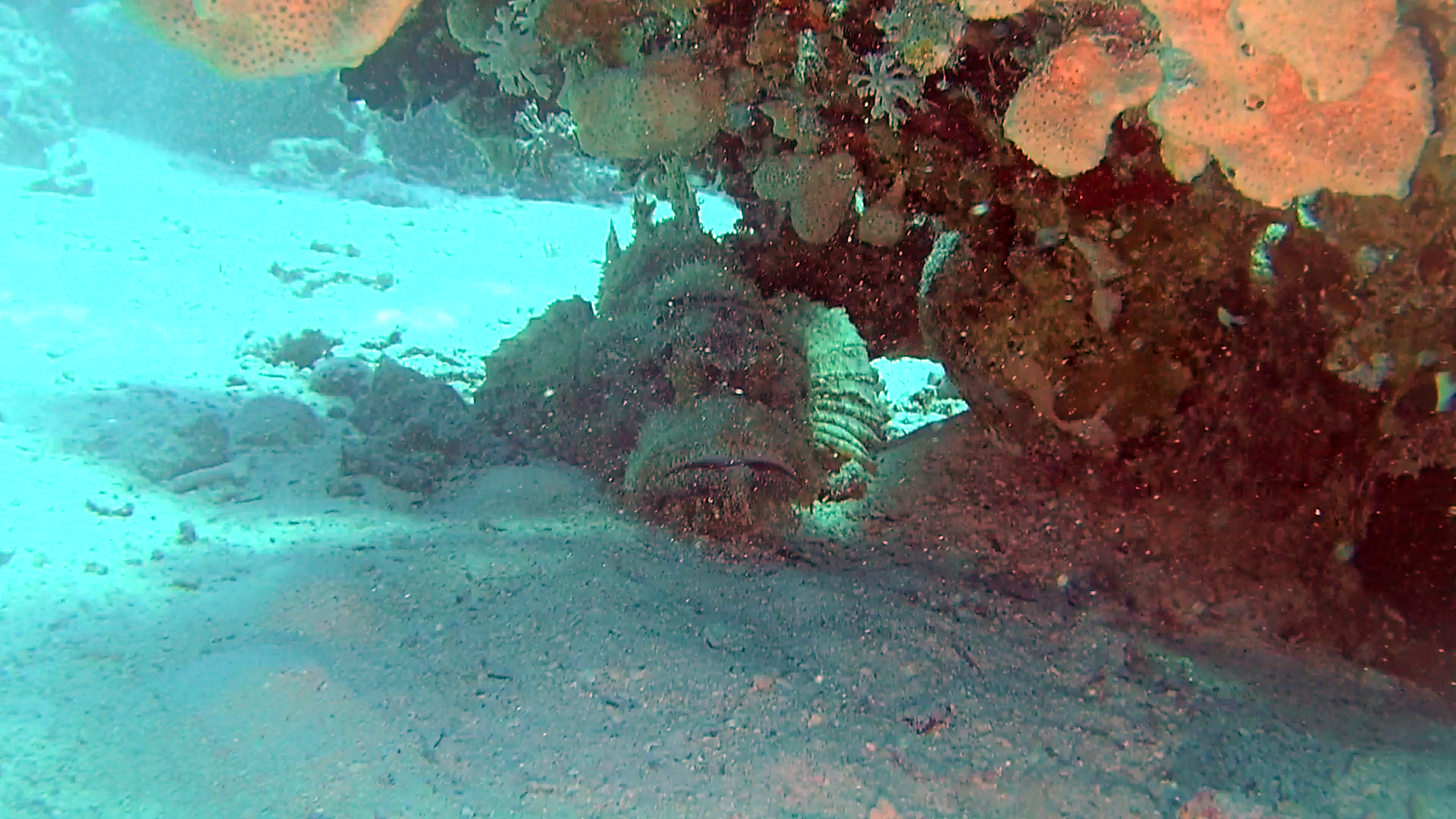
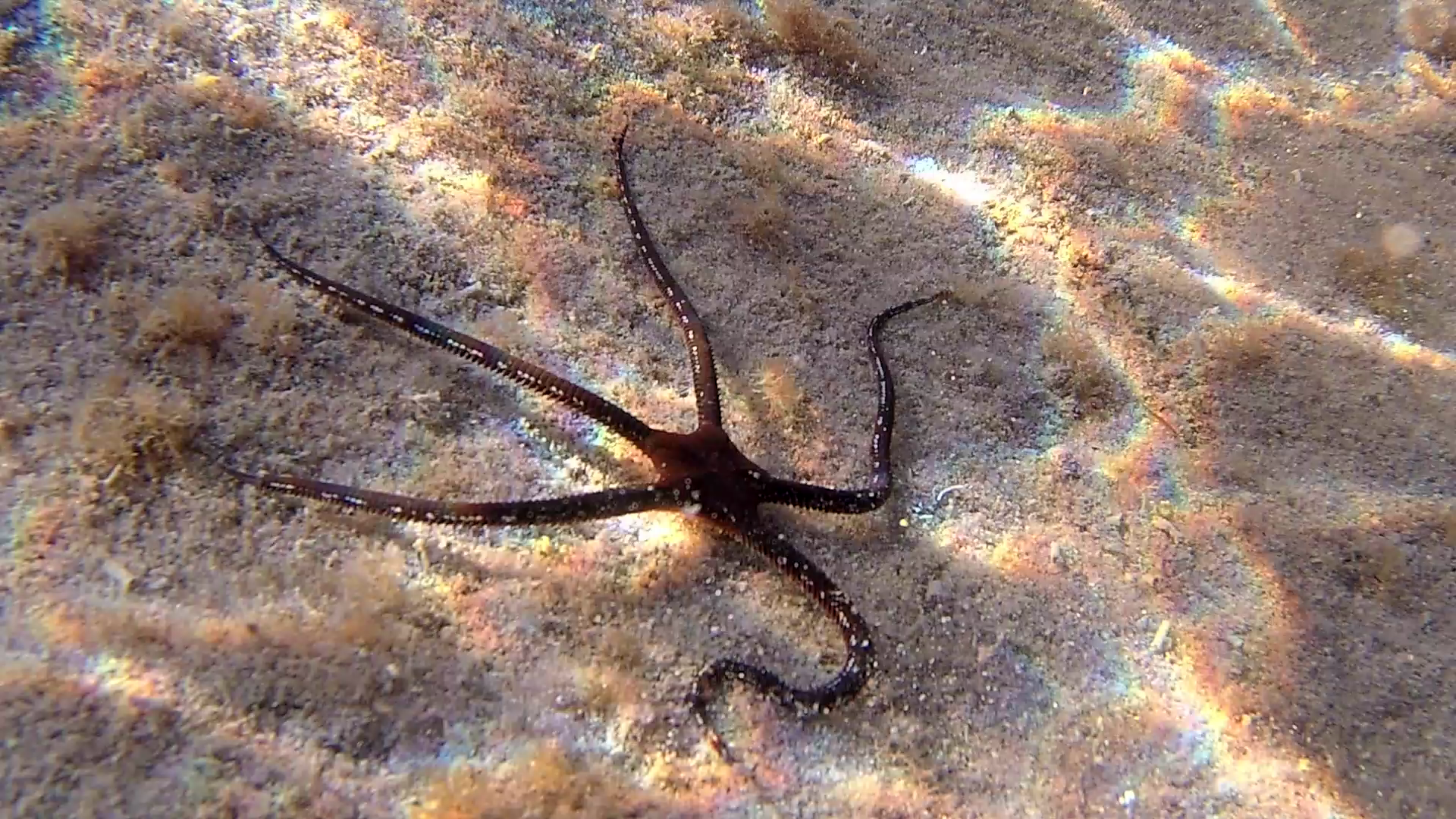
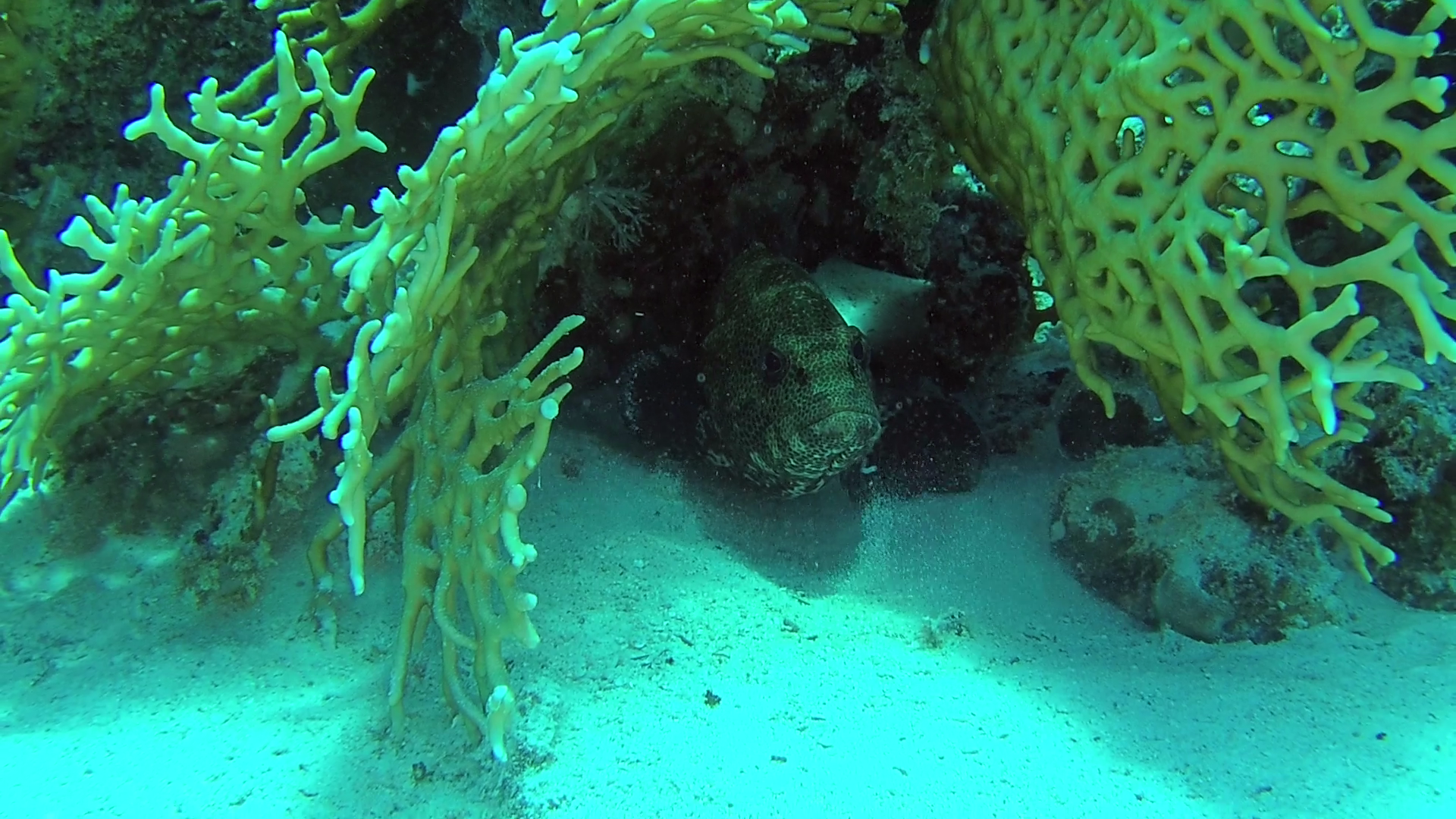
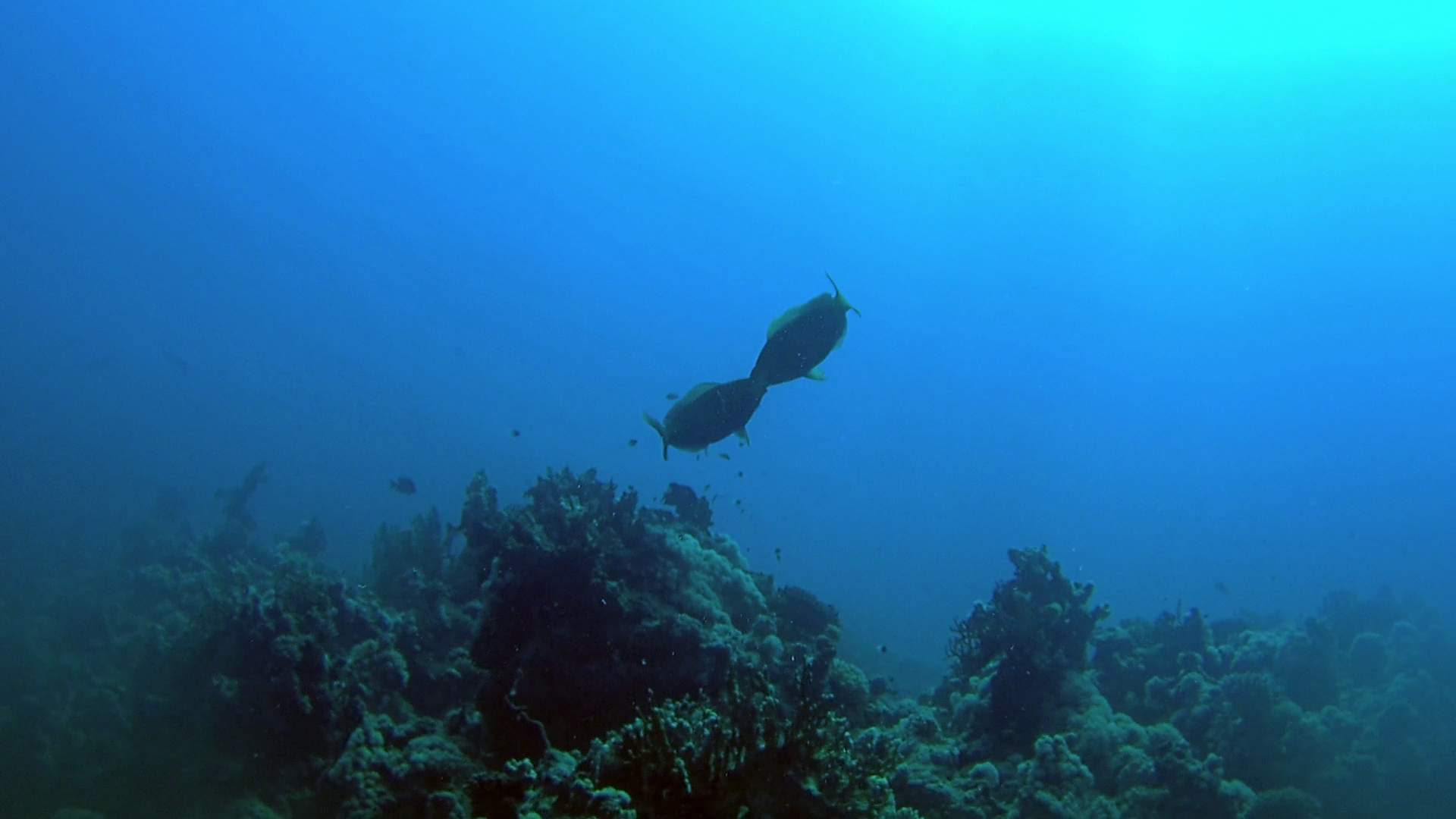
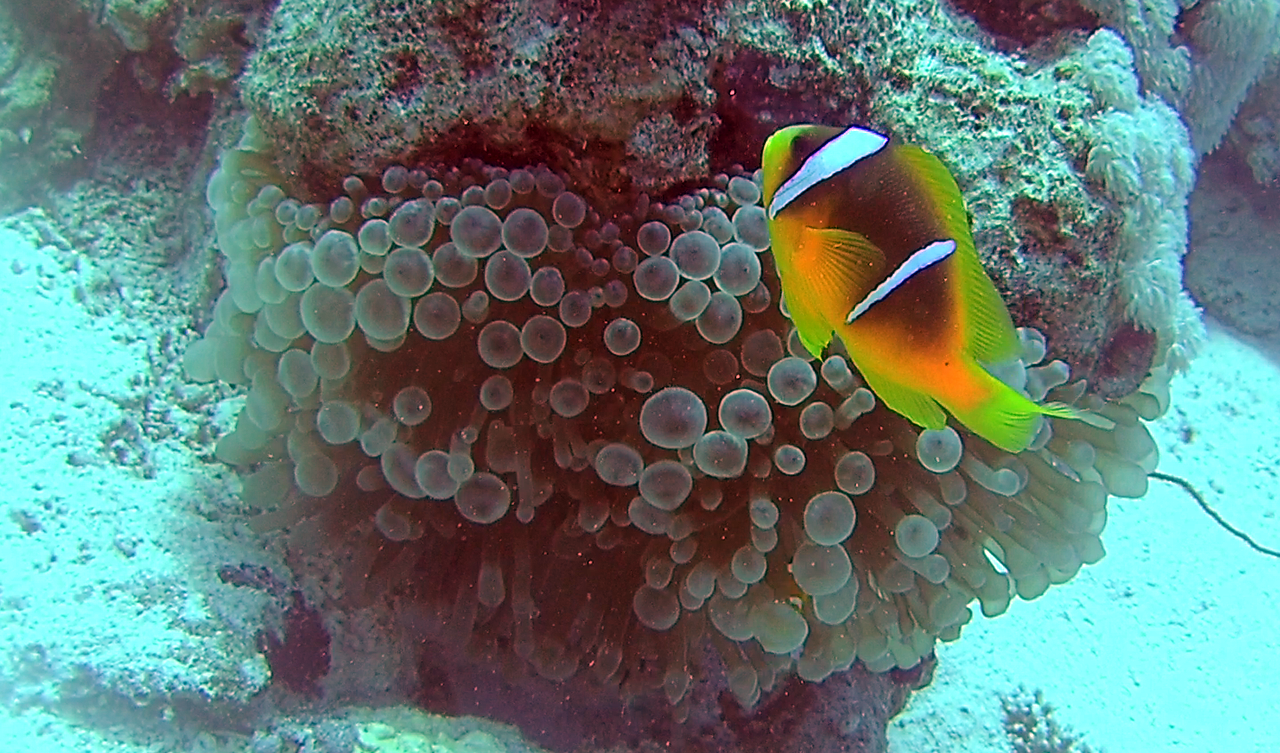
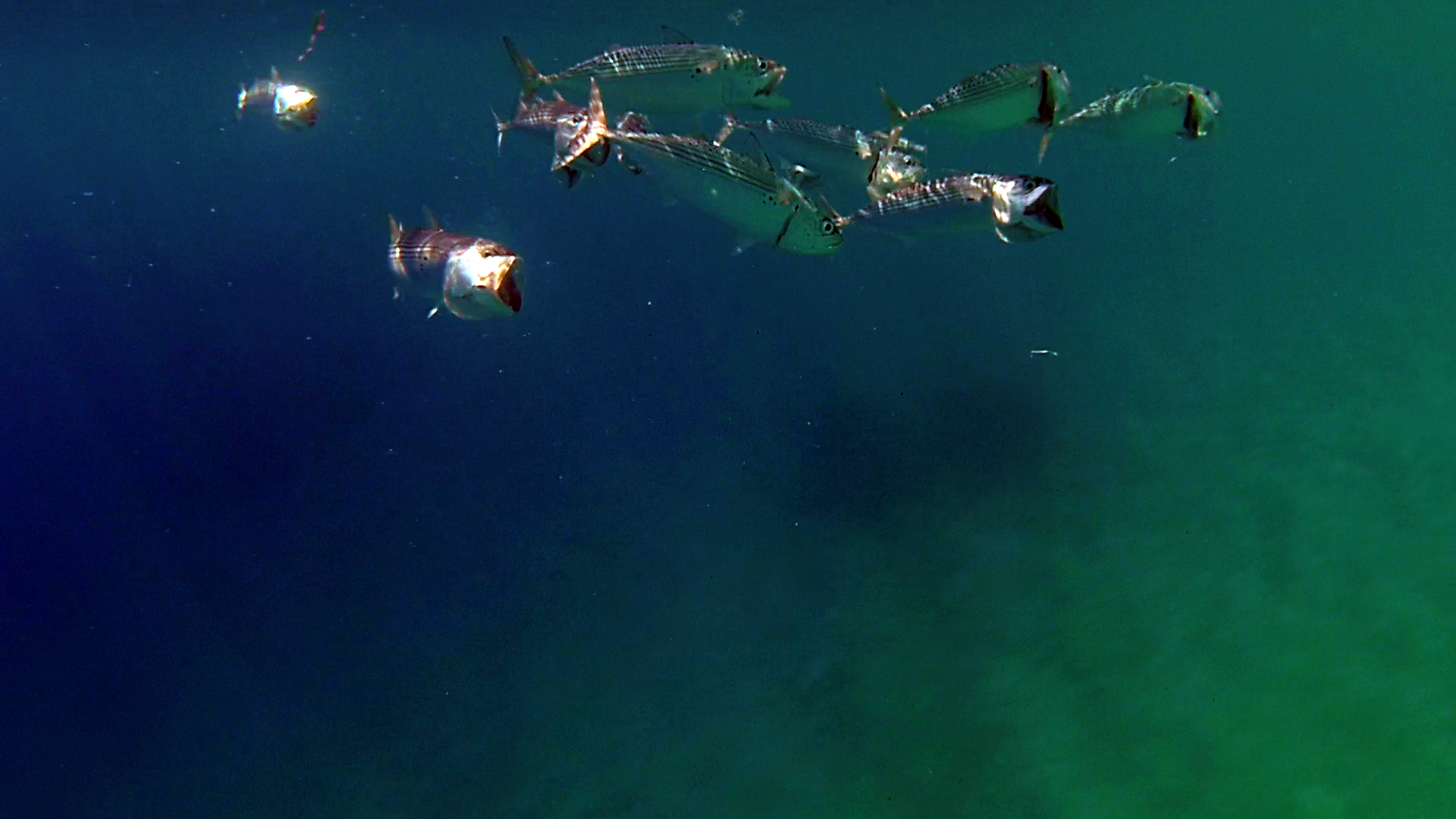
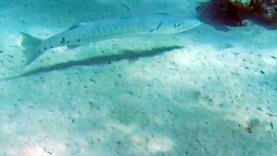
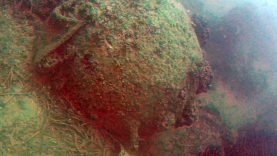
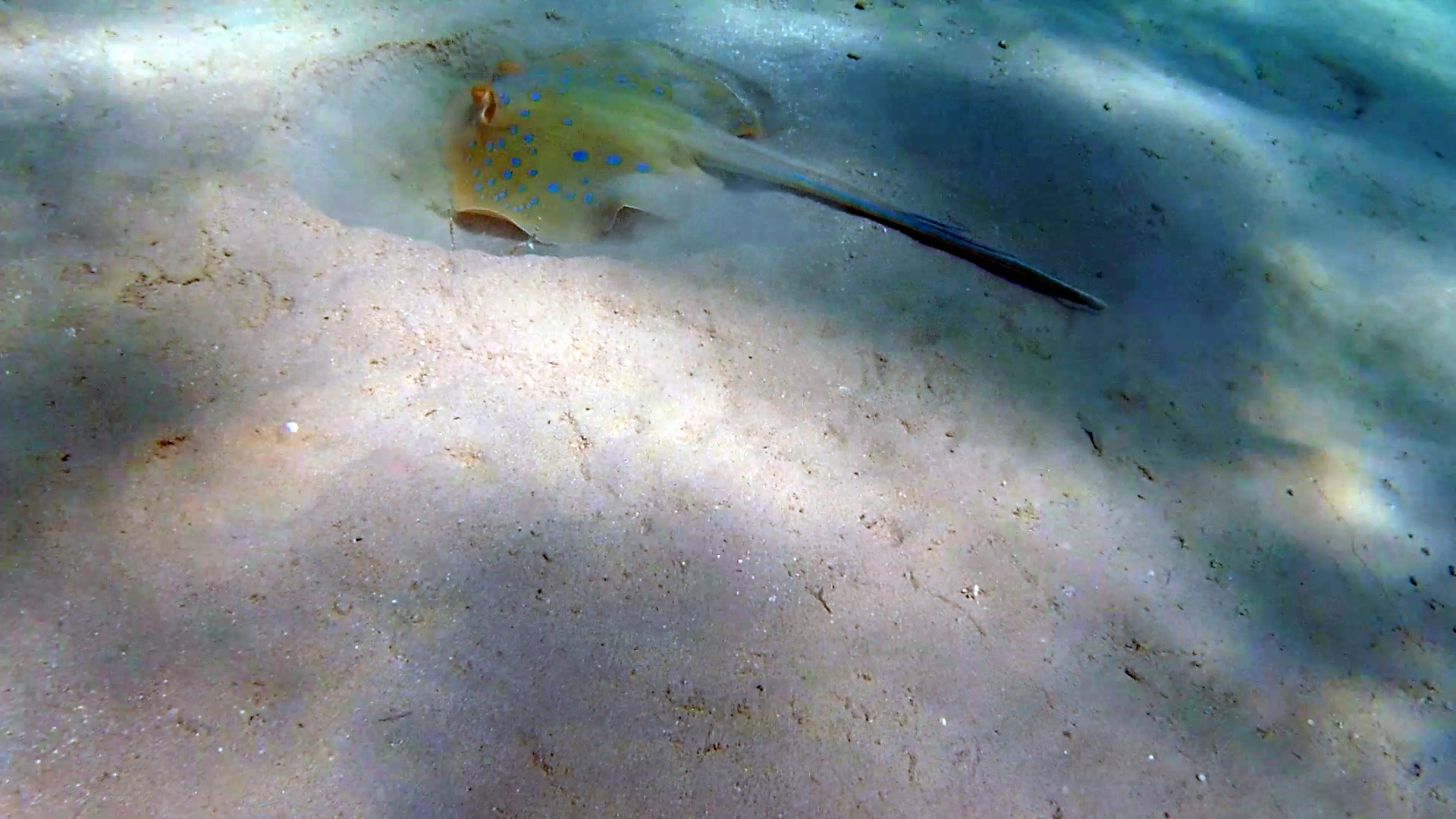
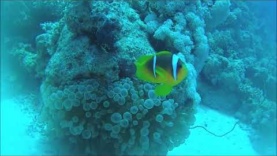









You must be logged in to post a comment.